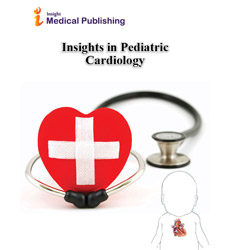Abstract
Accurate assessment of the ventricular function in neonates
Ventricular function may be the depressed in neonatal disease processes such as hypoxia, sepsis, haemolytic disease of new-born, surfactant deficiency lung disease, PPHN and transient tachypnoea of new-born. In contrast to adult patients, little is known about the best way to assess ventricular function. Invasive monitoring of central venous pressure, capillary wedge pressure and cardiac output are seldom done in the neonate especially the preterm.
Usually heart rate and blood pressure are the only measured indices of cardiac function and they may be misleading. A dysfunctional heart maybe tachycardic, bradycardic, or have a normal rate. In hypotensive neonatal cardiac function may be depressed, normal, or even hyperdynamic.
Therapeutic interventions may modify cardiac function or cardiac output intentionally or incidentally, so an index of ventricular performance is needed to make sure that such interventions are appropriate this is now possible by echocardiography serial measurements allow rapid assessment of the effectiveness of therapeutic interventions. In this presentation, or poster, I will discuss how to assess: Systolic function of both Left ventricle and right ventricle including new principles in assessing right ventricular function.
Diastolic functions; especially that in recent years have seen an enormous increase in interest in other cardiology and the role of the diastole in ventricular performance particularly in ischemic heart disease, ventricular hypertrophy cardiomyopathy, and pericardial disease. Now that diabetic cardiomyopathy and dexamethasone induce cardiac hypertrophy are recognised in neonates, the assessment of the diastolic function should be an important subject of research.
Keywords: Heart functions, Haemodynamic, Neonatal circulation
Author(s):
Michael Sammaan
Abstract | PDF
Share this

Google scholar citation report
Citations : 5
Insights in Pediatric Cardiology received 5 citations as per google scholar report
Insights in Pediatric Cardiology peer review process verified at publons
Abstracted/Indexed in
- Google Scholar
- Secret Search Engine Labs
Open Access Journals
- Aquaculture & Veterinary Science
- Chemistry & Chemical Sciences
- Clinical Sciences
- Engineering
- General Science
- Genetics & Molecular Biology
- Health Care & Nursing
- Immunology & Microbiology
- Materials Science
- Mathematics & Physics
- Medical Sciences
- Neurology & Psychiatry
- Oncology & Cancer Science
- Pharmaceutical Sciences

